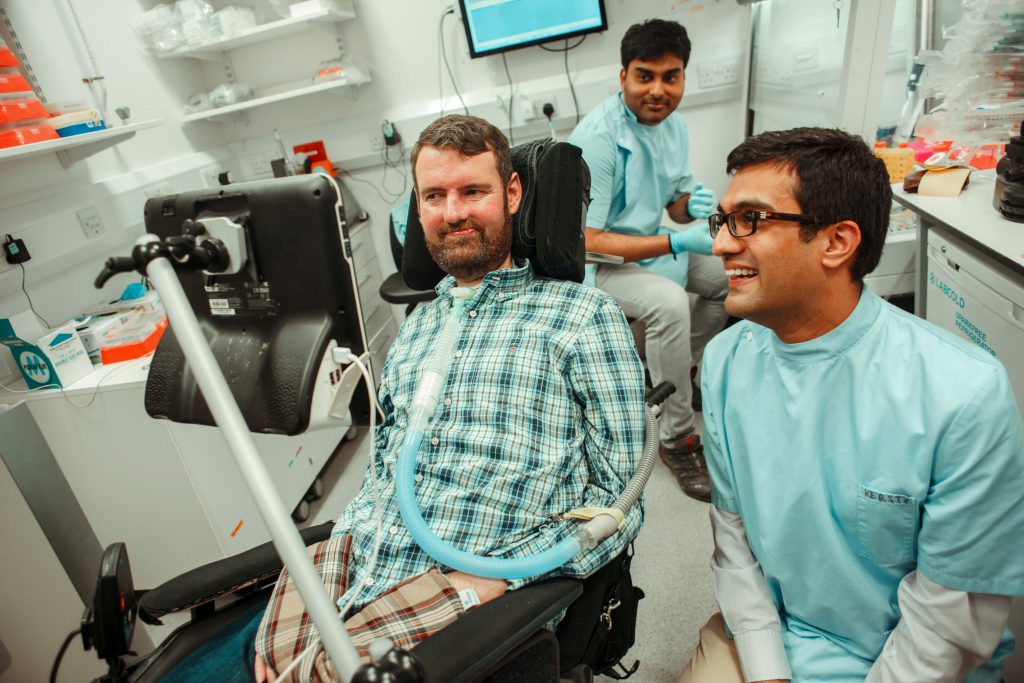What is MND
Find support
I have MND
I am supporting someone
Get involved
Research
About MND Scotland
What’s new?
© MND Scotland 2024
© MND Scotland 2024

The team has proven for the first time that axons – the long nerve fibres which connect and send electrical impulses from the nerve cells to the muscles – are shorter in cells affected by MND than in healthy cells.
They also discovered that the movement of the mitochondria, the tiny energy cells which move up and down the axons, is impaired.
However, researchers have found that the damage to the nerve cells – or motor neurons – caused by MND can be repaired by boosting the energy levels in these mitochondria.
Once this was done the axon reverted back to normal length in laboratory experiments.
The effect was achieved in the lab using motor neurons grown from stem cells collected from people with a genetic mutation known to cause MND.
These lab-grown motor neurons were then exposed to a virus which supercharged a key molecule vital to the healthy functioning of mitochondria.
The team, based at the Euan MacDonald Centre for MND Research at Edinburgh University, believe they may be able to produce the same result in patients – not with a virus, but by re-purposing an existing drug instead.
Dr. Arpan Mehta, one of the lead scientists on the project, said: “Our data provides hope that by restoring the cell’s energy source we can protect the axons and their connection to muscle from degeneration.
“Work is already underway to identify existing licensed drugs that can boost the mitochondria and repair the motor neurons. This will then pave the way to test them in clinical trials.”
Sign up
for newsletter
Get the latest news and events straight to your inbox
You can help create a world without MND